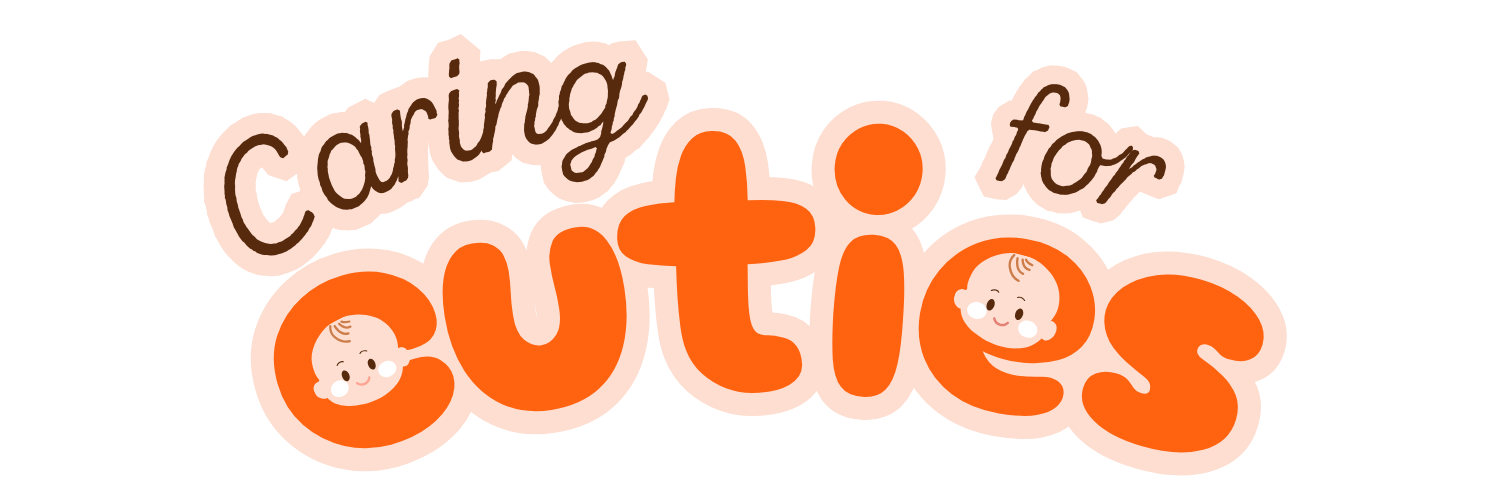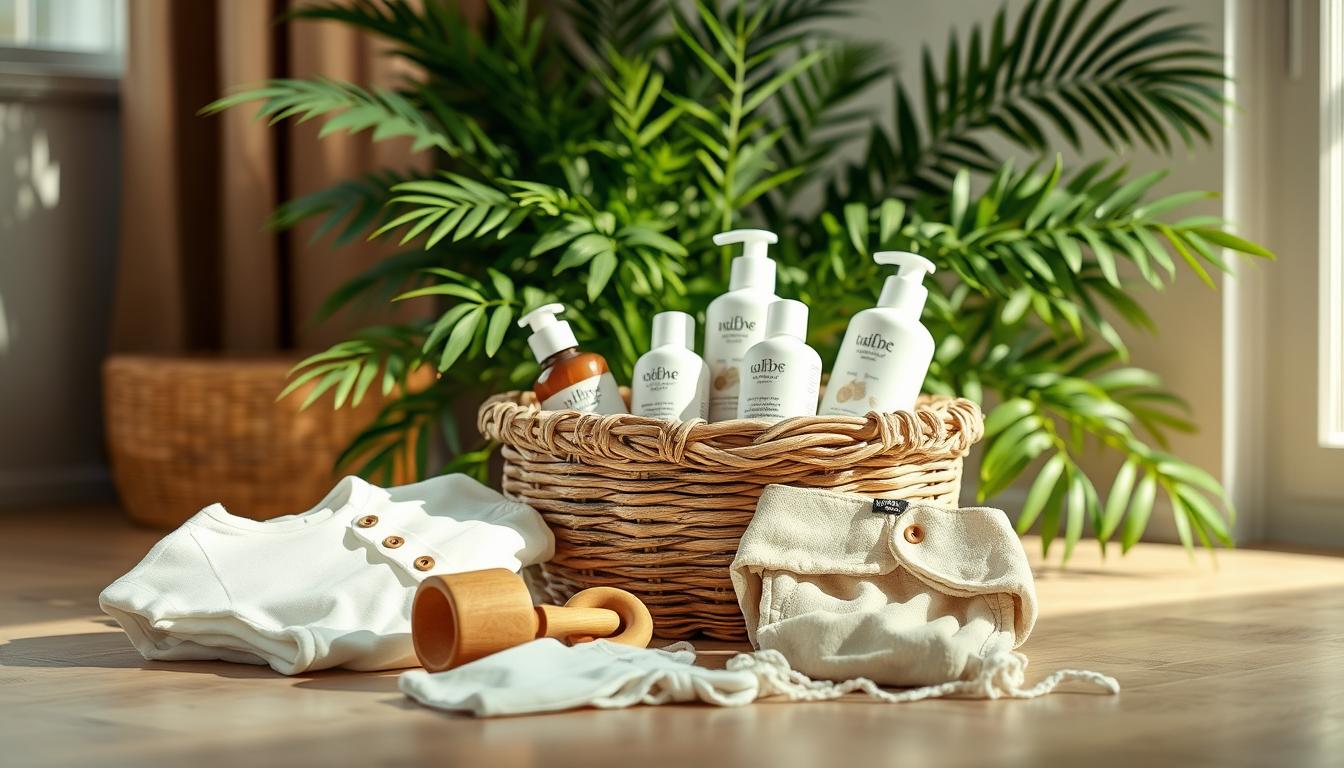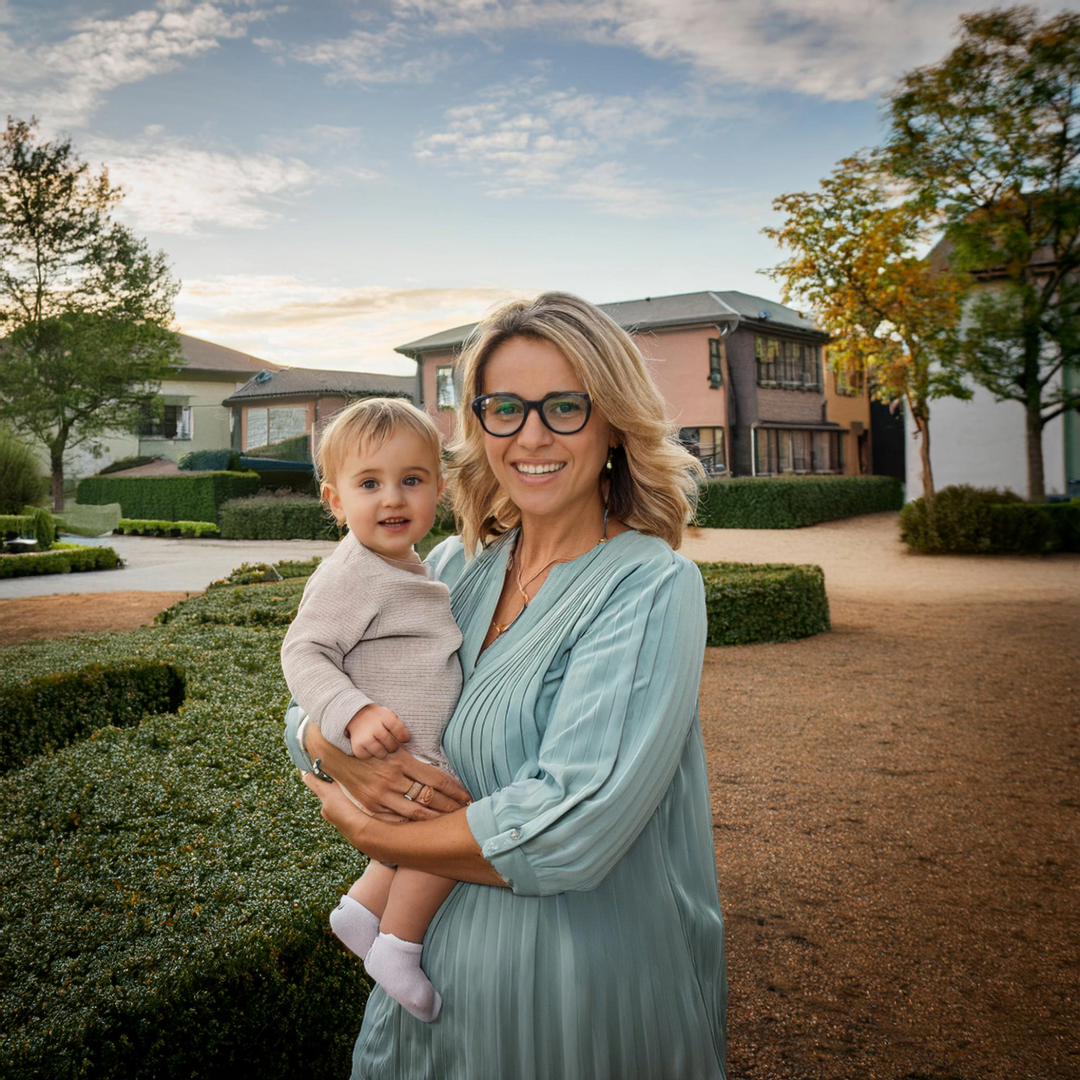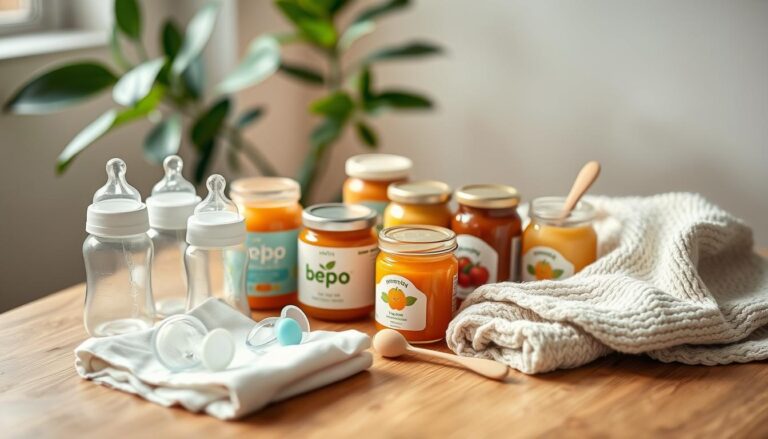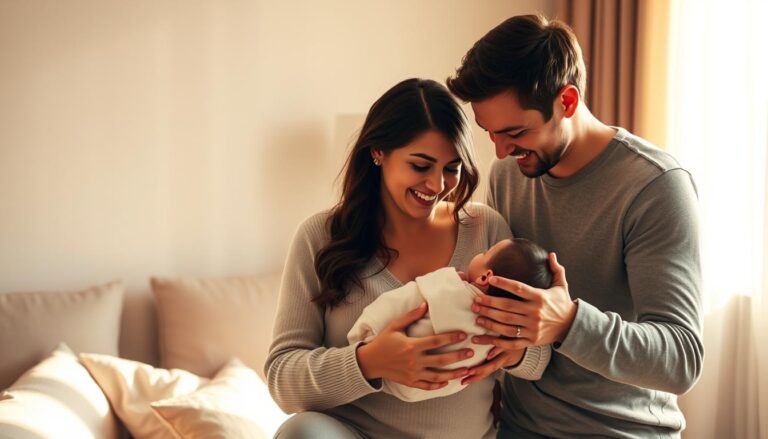Parents today want the best for their little ones—safety and sustainability go hand in hand. As awareness grows, more families are choosing Eco-Friendly Newborn Products that protect both their baby and the planet. The demand for responsibly made gear is rising, and brands are stepping up to meet it. Discover how you can make greener choices for your newest addition.
Corporate responsibility plays a big role. Studies show that over 70% of greenhouse emissions since 1988 come from major companies. Smart shopping habits can push for greener practices while keeping infants safe.
This guide covers top-rated options—from diapers to clothing—helping you make informed choices. Some links may earn us a small commission, but our recommendations stay honest and independent.
Key Takeaways
- Parents prioritize safe, sustainable choices for their babies.
- Consumer demand influences corporate environmental efforts.
- Dual focus: infant safety and reduced ecological impact.
- Transparent affiliate links ensure trustworthy recommendations.
- Categories include toys, skincare, feeding, and more.
Why Choose Eco-Friendly Newborn Products?
Every parent seeks safe, earth-conscious options for their child’s early years. Traditional baby gear often relies on plastics and harsh chemicals, contributing to long-term environmental damage. Switching to sustainable alternatives reduces waste and exposure to toxins.
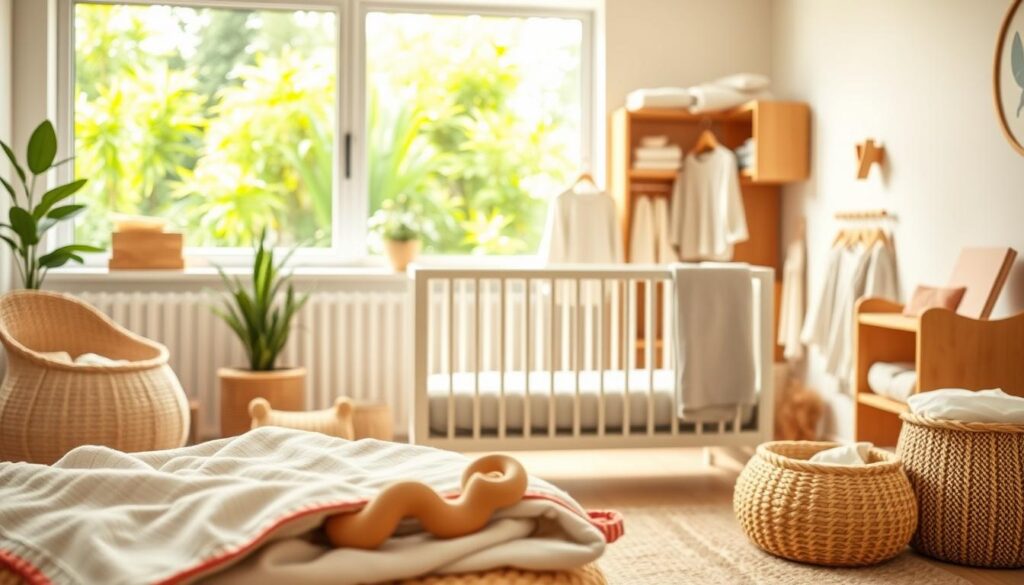
Consumer choices drive change. By supporting brands committed to greener practices, families can help shift industry standards.
Health and Environmental Benefits
Non-toxic materials like organic cotton or bamboo minimize skin irritation and allergies. Conventional items may contain phthalates or formaldehyde—linked to respiratory issues.
Reusable options, such as cloth diapers, cut landfill waste dramatically. Esembly’s Try-It Kit alone prevents 1,000+ disposable diapers annually.
| Feature | Traditional Diapers | Sustainable Diapers |
|---|---|---|
| Materials | Plastic, synthetic fibers | Organic cotton, hemp |
| Cost Over 2 Years | $800–$1,200 | $300–$600 (reusable) |
| Environmental Impact | 3,000+ disposables per child | 20–30 cloth diapers |
Ethical and Economic Advantages
Look for certifications like Greenguard or GOTS (Global Organic Textile Standard). These ensure low chemical emissions and ethical labor practices.
Investing in durable items saves money long-term. A single silicone feeding set replaces dozens of plastic bowls.
Prioritizing sustainable baby gear isn’t just a trend—it’s a step toward a cleaner, safer future.
Top Eco-Friendly Toys for Developmental Play
Playtime meets sustainability with toys designed for both fun and environmental care. The right picks encourage growth while reducing waste—perfect for little explorers.
Lalo’s Play Box: Motor Skill Builders
Made from Plan Wood (rubber tree scraps), Lalo’s kits target ages 0–24 months. Each box fosters grasping and coordination. Their donation program extends the lifecycle of every box.
GUND’s 100% Recycled Puppy Lovey
This cuddly companion uses pre-consumer recycled materials for stuffing and beads. Soft, safe, and machine-washable—it’s a hug in plush form.
Melissa & Doug’s Sensory Ice Cream Toy
No batteries needed! This wooden set delights with textures and sounds. Durable enough for hand-me-downs, it’s a win against single-use plastic.
“Toys should nurture curiosity without costing the earth.”
From upcycled fabrics to bio-circular designs, today’s options prove play can be planet-friendly. Choose wisely—your baby and the future will thank you.
Sustainable Diapering Solutions
Diapering doesn’t have to harm the planet—smart swaps make a significant difference. Today’s options blend convenience with responsibility, cutting landfill waste without compromising comfort.
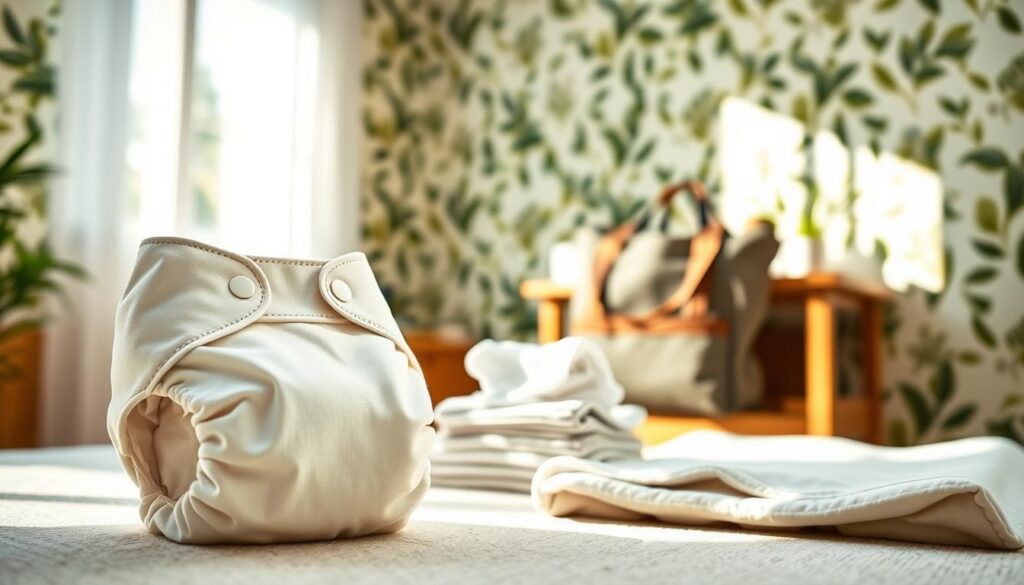
Esembly’s Cloth Diapers: Waste-Free Comfort
Esembly’s adjustable organic cotton diapers feature waterproof outer shells in stylish designs. One kit prevents 1,000+ disposables annually—a win for your wallet and the earth.
Parents love the simple washing routine: toss inners in the machine, wipe shells clean. Over two years, reusables save $500+ compared to disposables.
Yipes! Biodegradable Baby Wipes
For messes on the go, Yipes! wipes offer a 94% plant-based formula. No harsh chemicals—just hypoallergenic, compostable peace of mind.
Kid-friendly packaging makes them a hassle-free way to stay green. Pair them with organic clothes for a full eco-conscious routine.
“Switching to reusable diapers was easier than I thought—and my baby’s skin has never been happier.”
Both brands offer affiliate-linked purchasing options, making sustainable choices accessible. Small changes add up—starting with diapering can set the tone for years.
Gentle Skincare for Sensitive Skin
Delicate skin deserves the gentlest care—free from harsh chemicals and full of natural goodness. Today’s skincare products blend safety with sustainability, offering plant-powered solutions for irritation-prone baby skin.
California Baby’s Plant-Based Collection
Their fragrance-free shampoos and lotions use 100% plant-based formulas, ideal for sensitive skin. Free from parabens and synthetic dyes, each product is rigorously tested for purity.
Parents love the calming lavender variant, which soothes without artificial scents. The brand’s commitment to transparency ensures every ingredient is traceable—a simple way to trust what touches your little one’s skin.
Green People’s Organic Nappy Cream
This plastic-free salve tackles rashes and eczema with organic cotton extract and chamomile. Its thick, long-lasting formula creates a protective barrier, reducing redness in hours.
Certified by ECOCERT, it avoids petroleum-based ingredients common in conventional creams. Pro tip: Pair it with reusable cloth wipes for a zero-waste routine. Green People even offers a 20% discount for newsletter subscribers.
“Switching to plant-based skincare cleared my baby’s eczema—no more midnight fussing.”
Eco-Conscious Feeding Essentials
Mealtime can be both safe and sustainable with the right feeding essentials. Modern parents have more options than ever—gear that avoids harmful chemicals while minimizing environmental impact.
MAM’s Bio-Circular Pacifiers
These pacifiers use natural rubber and 50% plant-based materials. The recyclable packaging and microwave-sterilization feature make them a hassle-free choice. At $15 for a 3-pack, they’re budget-friendly too.
MAM’s on-demand production model cuts overproduction waste. Their design ensures no plastic touches your baby’s mouth—just soft, breathable silicone shields.
BPA-Free Silicone Feeding Sets
Lalo’s First Bites Kit features FDA-approved silicone bowls and spoons. Dishwasher-safe and stain-resistant, they outlast traditional plastic sets. The flexible design encourages self-feeding without spills.
“We switched to silicone bowls after our third cracked plastic one—no more replacements needed!”
For bottles, silicone offers durability, while glass is 100% recyclable. Both beat disposable alternatives in long-term cost and eco-impact.
Earth-Friendly Baby Clothing & Accessories
Soft, safe, and kind to the planet—baby clothes and accessories can make a big difference. Traditional options often rely on synthetic fabrics and wasteful packaging. Sustainable picks prioritize organic cotton and recycled materials, reducing environmental harm while keeping little ones comfortable.
Blaynk’s Organic Cotton Bibs
Blaynk’s 3-pack bibs are made from unbleached organic cotton, ideal for sensitive skin. Snap-adjustable sizing ensures a perfect fit as babies grow. Unlike plastic-backed bibs, these are fully biodegradable—gentle on skin and the earth.
( r e )xKids’ Recycled Plastic Hangers
These hangers turn discarded plastic into sturdy, functional accessories. ( r e )xKids’ closed-loop system rewards families with a $5 credit for returned hangers. It’s a simple way to cut waste while organizing tiny wardrobes.
| Feature | Traditional Accessories | Sustainable Alternatives |
|---|---|---|
| Materials | Polyester, PVC | Organic cotton, recycled plastic |
| Lifespan | Months (often discarded) | Years (multi-child use) |
| Cost Efficiency | $3–$5 per item | $10–$15 (long-term savings) |
Fast fashion’s impact is stark—1.2 billion tons of CO₂ annually. Choosing durable clothing and accessories slashes this footprint. Oxfam’s preloved guide (with a 10% discount) offers more budget-friendly tips.
“Investing in quality pieces means fewer replacements—better for my baby and the planet.”
From bibs to hangers, these choices last through multiple years and children. Small swaps add up to a greener future.
Conclusion
Choosing sustainable baby gear—from toys to diapers—helps protect little ones and the planet. Each purchase supports brands that prioritize safety and eco-conscious practices.
Secondhand shopping or rentals like Whirli toys offer a smart way to reduce waste. Explore our guides on clothing and sunscreen for more tips.
Your choices matter. Every family can make a difference by opting for durable, non-toxic items. Ready to start? Browse our trusted recommendations or subscribe for updates.
